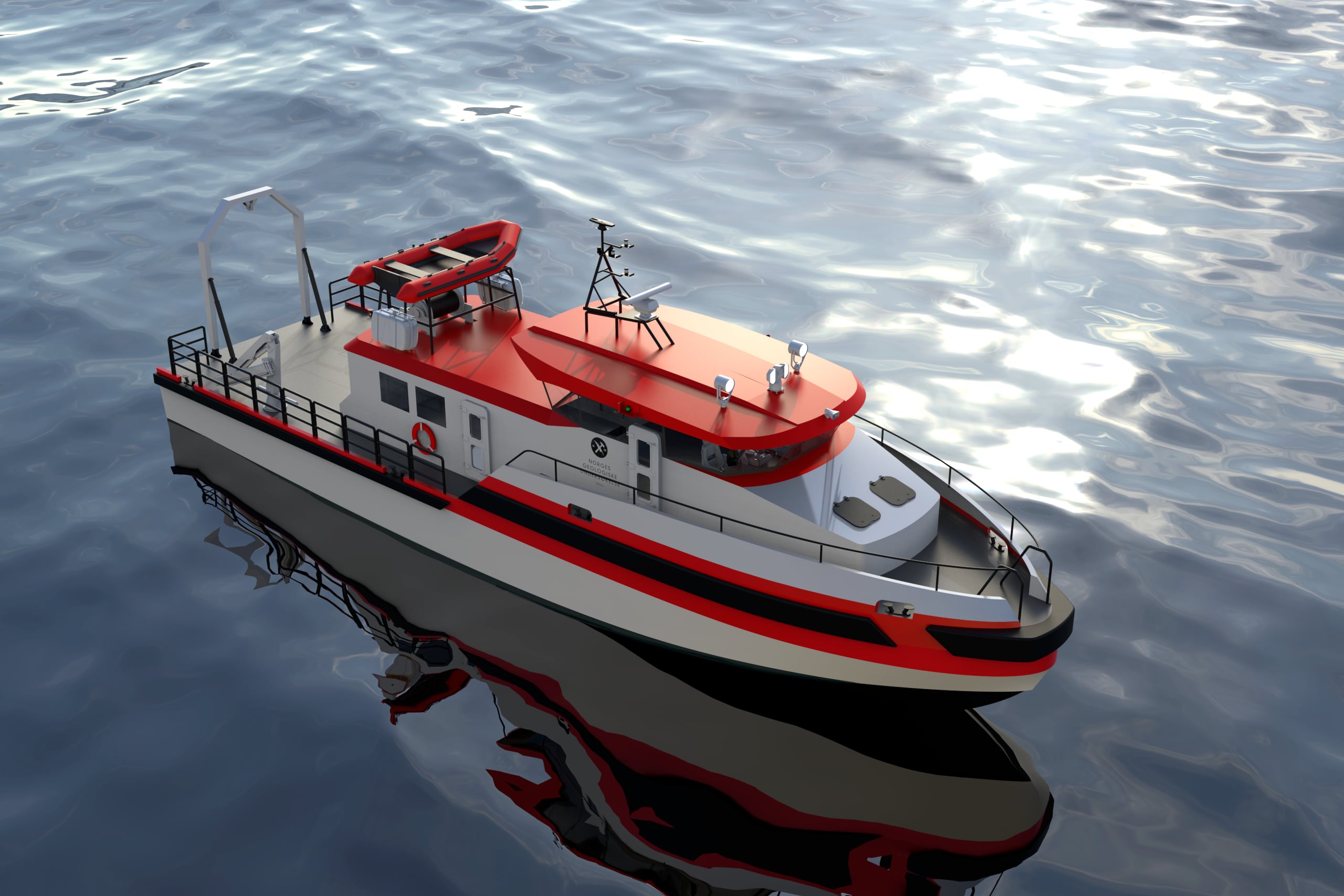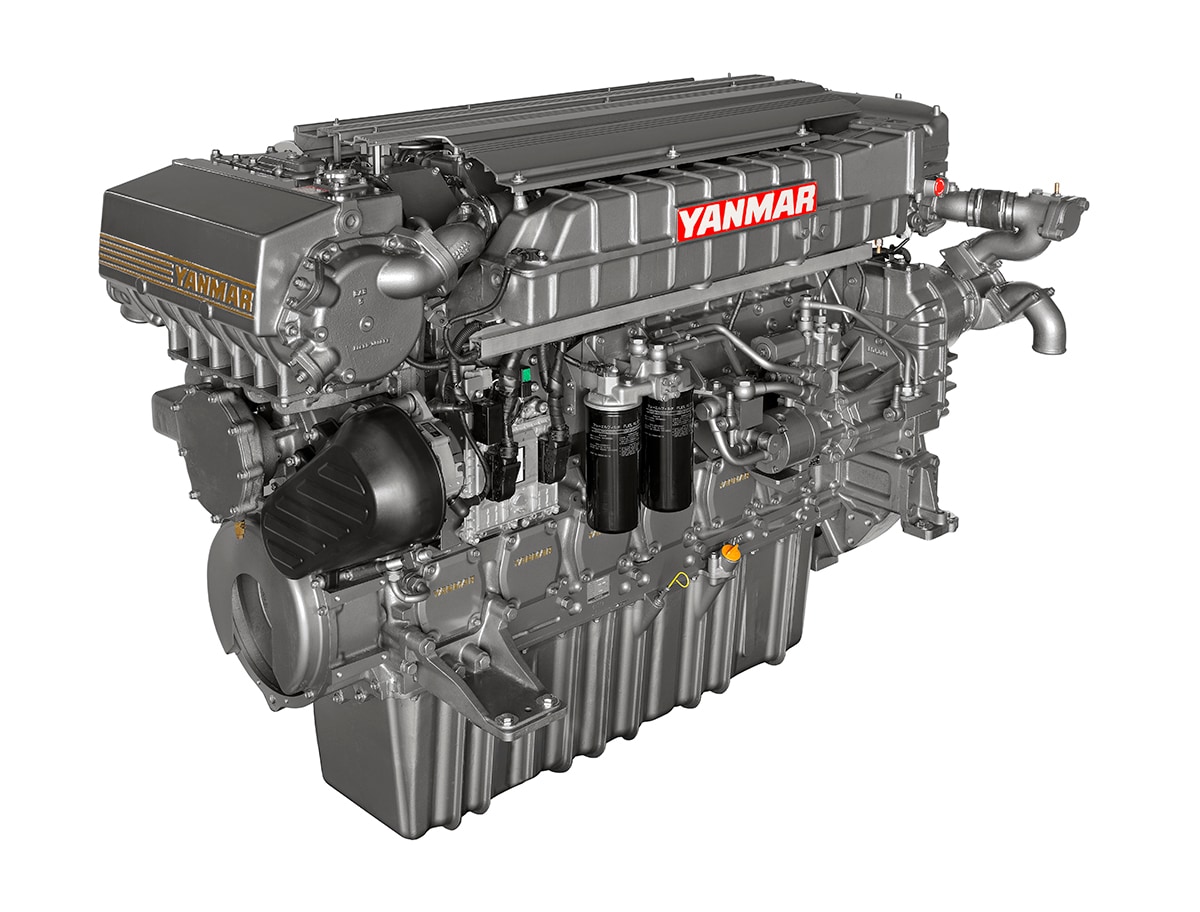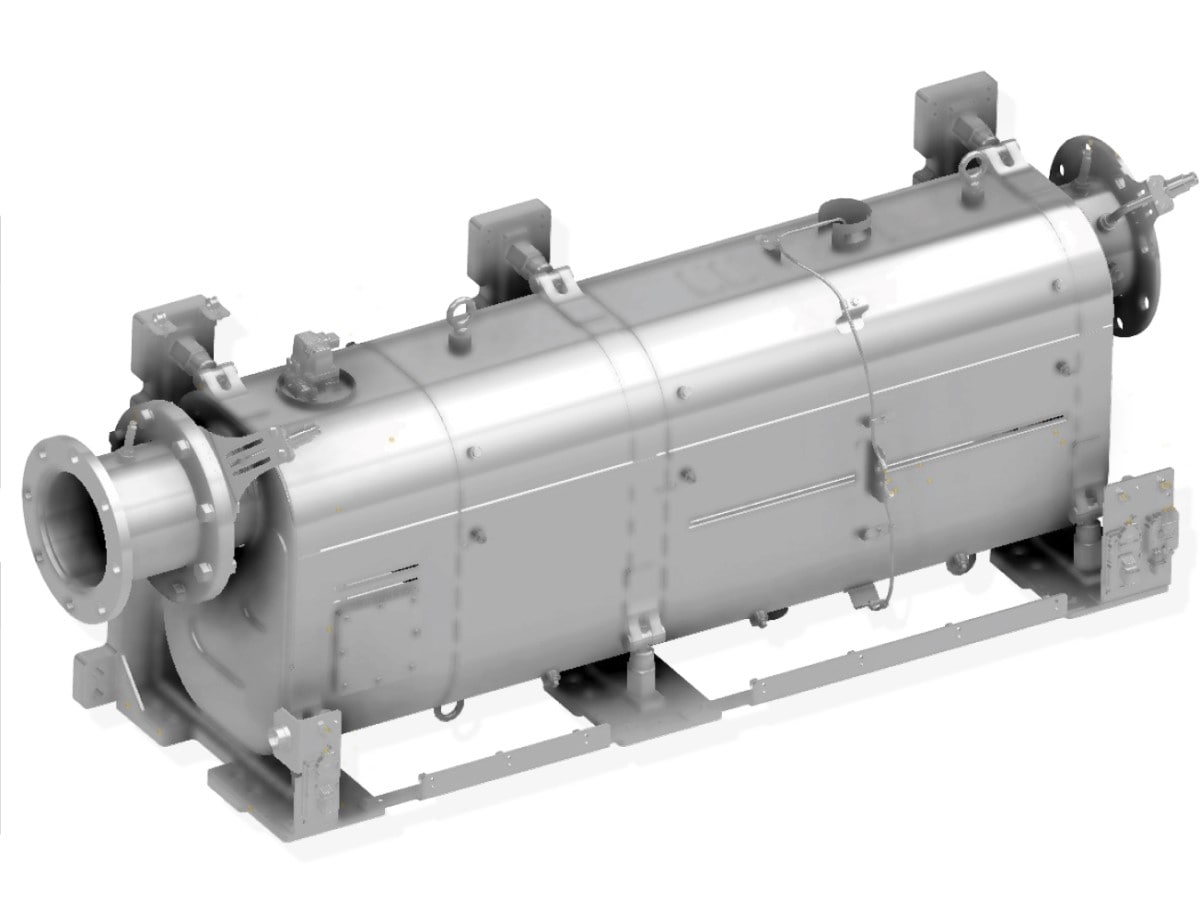News Release
Hybrid Survey Vessel build is well under way
March 28, 2022
Yanmar Europe B.V.

The newest Geological Survey of Norway vessel is currently under construction at the Kewatec shipyard in Porvoo, Finland. Named Geologen, she’s destined for a life of study in Norwegian waters, and she’s now at the hull construction stage. She’s 24 metres long, 6 metres wide, and she’s equipped with a novel hybrid drive. Top speed is 18 knots.
Jari Ahoranta is sales director at Kewatec. He says, “The e-Work 2390 Survey is a multi-purpose vessel built for marine research and training both in shallow archipelago waters as well as in open seas. The vessel consists of work deck areas, wet and dry laboratories, a walk-in freezer, large indoor storage spaces, tank rooms, engine rooms and a wide wheelhouse with a 360º view. The boat can be handled from 4 separate steering positions.
“The client wants to use her for tasks like geological surveys, acoustic positioning seismic surveys and echo sounding. Also we’re installing an A-frame and winch for sampling direct from the seabed.”
These complex tasks mean she’s bristling with delicate and accurate measuring equipment, so she’s designed with an emphasis on low noise and vibration, high security and dynamic positioning.
Hybrid propulsion with IMO III emission levels


The drive system is really interesting. She’s being fitted with two Yanmar 6AYEM-GTWS units, rated at 670kW (911hp) each which are part of a hybrid system. It is arranged as two independent propulsion systems with full redundancy.
Ahoranta explains, “Choosing an engine is about several factors. We need the best combination of technical features, suitability, delivery time and price, and it’s determined on a case-by-case basis. Here it was also compulsory to deliver according to IMO Tier III emission levels. In addition, it is a hybrid drive boat, and environmentally-friendlier solutions were a key factor from the beginning.”
The system is based on a design from Kumera-Helseth and Brunvoll-Triton. The main engine and propulsion shaft will be as normal, but a mechanical connection for the electric motor will be installed on the gearbox.
The battery-powered hybrid propulsion and manoeuvring system consists of a generator, a propulsion control system, an energy management system, batteries with monitoring systems, and converters and filters for the electric motors. There’s a DC fuse box to keep it all safe and a control system to manage it all.
Governing this from the bridge are two main panels for hybrid control, rudder control, back-up control and rudder indicators.
Ahoranta notes, “Hybrid battery power can be used at low speeds, with charging from generators or the electric motors on the gearboxes, or the shore if appropriate. When the boat is running with the main diesel engines, the batteries can be charged from permanent magnet electric motors. Hybrid operation is handled with one button when switching between diesel and electric.
“There are different operating modes. In DM mode, both diesel engines run with the maximum available power. In PM mode the motors can be used for charging. In electric mode, both electric motors are running with power from the batteries. In hybrid mode, one main engine can be driven and the other propeller powered by an electric motor.”
The hybrid solution will add additional weight of about 4,000 kg. The engines are tuned to accommodate this. She also has a government-approved monitoring and alarm system for the safe operation of the unmanned machine rooms with remote start/stop control from the bridge.
Sea trials and delivery are scheduled for Q4/2022.
Inquiries
Yanmar Europe B.V., Marketing Dept.
Dana van Kammen
dana_vankammen@yanmar.com
- Note: Information contained in the news release is valid at the time of publication and may differ from the most recently available information.